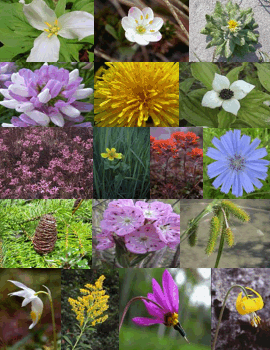Wollfia borealis is a tiny perennial, clonal aquatic plant that lacks roots and definite leaves or stems. It is found in North America across the more northern US states (CA, CO, CT, IA, ID, IL, IN, KS, KY, MA, MD, MI, MN, MO, MT, NC, NE, NH, NJ, NY, OH, OR, PA, SD, TN, UT, VA, VT, WA, WI) and is reported in Canada in BC, Alberta, Ontario and Quebec (USDA 2010). It is found in lakes, ponds and ditches, and has been reported in BC from several locations in the lower Fraser Valley. In his essay on the
rare plants of the Fraser Valley, Lomer (2011) says:
"Rarely seen in the Fraser Valley (Ceska & Ceska 1980), this miniscule aquatic plant looks like nothing more than green scum. It is proving to be more common than first thought, but is rather sporadic from year to year. New sites from Cultus Lake, Vancouver (UBC: Lomer 6754) and Cheam wetlands suggest it occurs from one end of the Fraser Valley to the other, especially in the central valley. It is not endangered as long as there are sloughs and Typha ponds and lakeshores. Easily overlooked, but uncommon nevertheless. It often grows with Lemna and Spirodella and is presumably spread by ducks so it can show up just about anywhere that ducks feed and where water is adequate. It can have explosive exponential growth late in the season, but is so tiny that only several square meters are covered in most instances."

